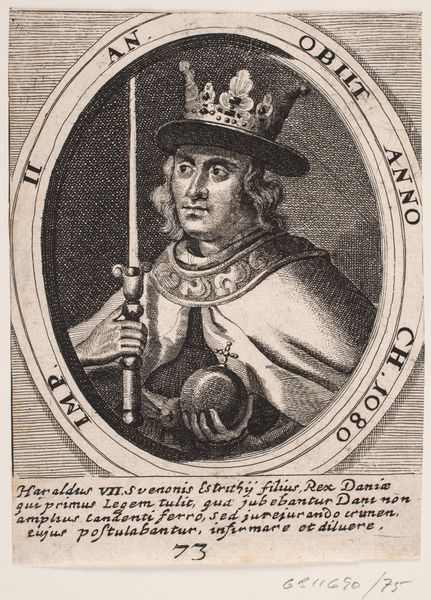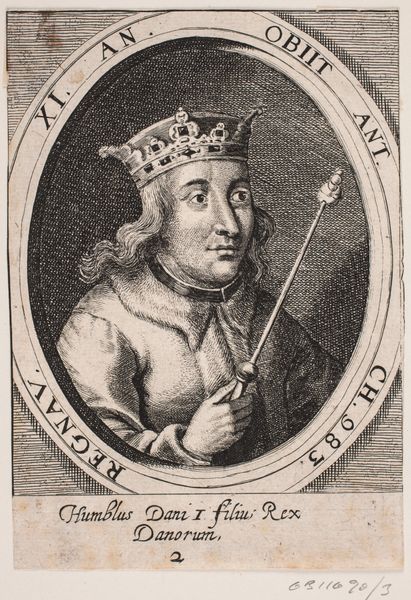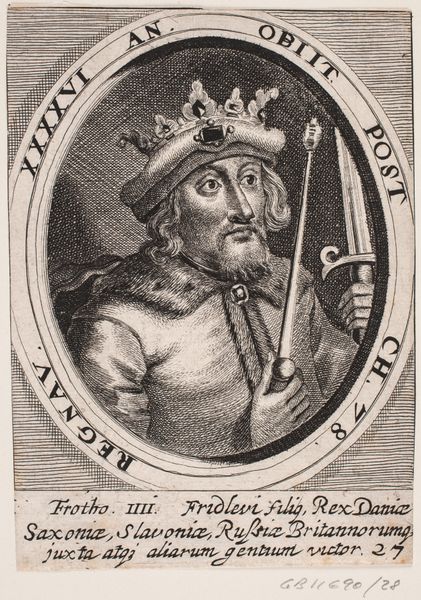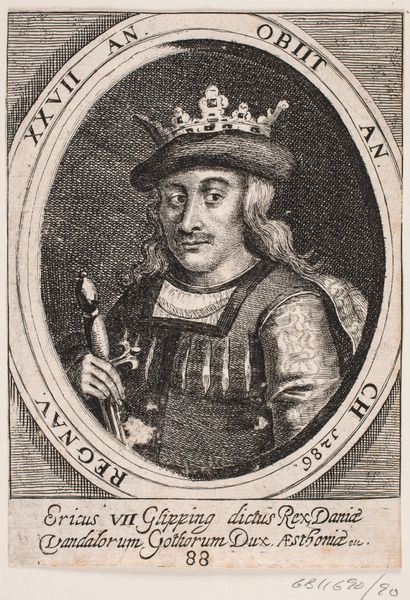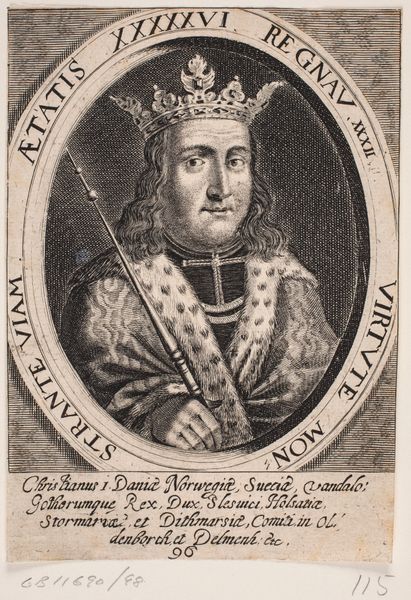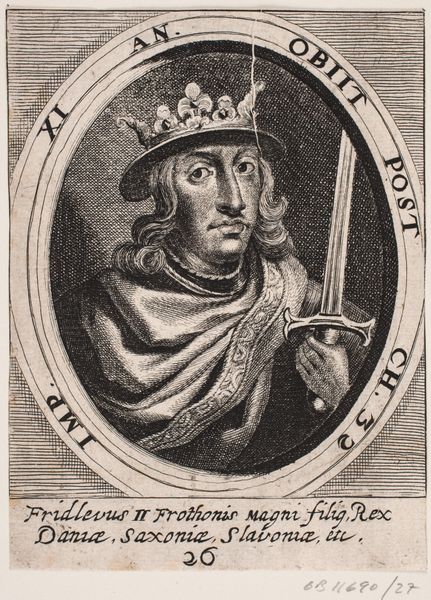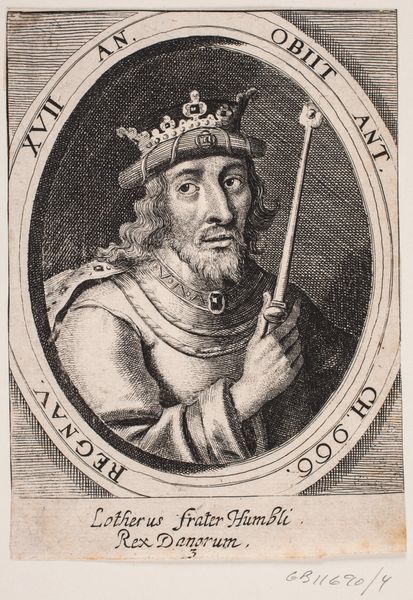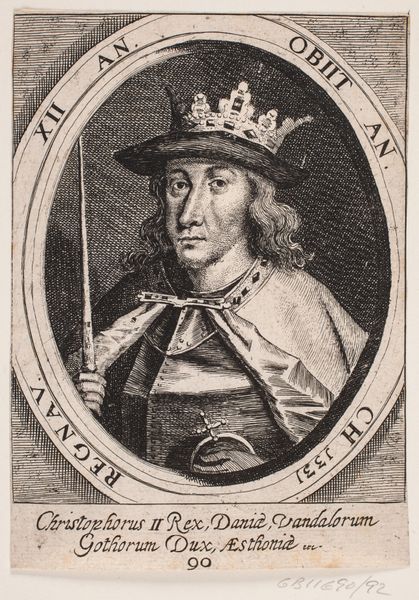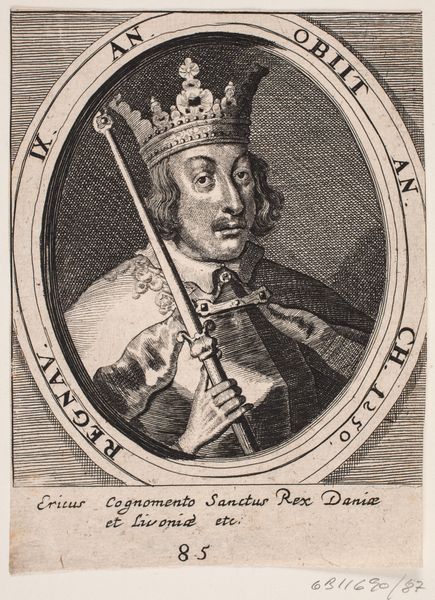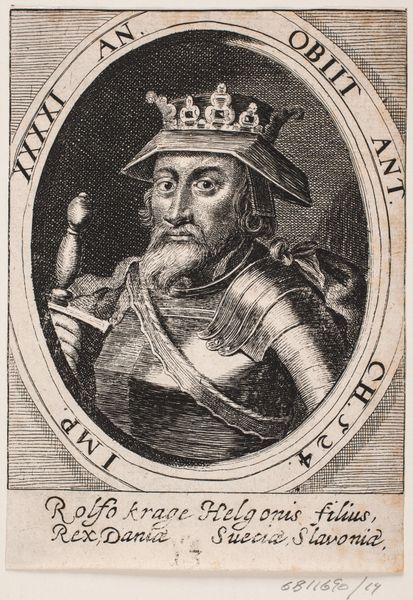
print, engraving
#
portrait
#
baroque
# print
#
history-painting
#
engraving
Dimensions: 140 mm (height) x 100 mm (width) (bladmaal)
Curator: Here we have a print titled "Kong Abel," created in 1646 by an anonymous artist. It's currently housed in the Statens Museum for Kunst, and it’s rendered in engraving. What’s your immediate response to it? Editor: The first thing that strikes me is the almost melancholic, contemplative mood of the portrait. He looks like a king burdened by fate, maybe even aware of some coming tragedy. The tight oval framing adds to that feeling, a sort of pressure. Curator: Interesting. The oval itself is a symbol frequently found on Northern renaissance royal effigies to emphasize sovereign strength. If you note the circular inscription "OBIIT AN. CH. 1252", do you reconsider melancholy? Editor: Yes! I'm very interested to notice how that specific detail places the figure firmly in historical narratives, right? I find how Abel appears to hold a sword in his hand is so indicative of the turbulent political times. What is his pose implying about the exercise of power in his moment? Curator: Yes. The sword certainly speaks to temporal power, but consider the details of the crown. What does that unusual crown shape suggest about how Abel would view heavenly as it overlaps with worldly authority? This detail alone marks it distinctly within an established visual vocabulary. Editor: Well, crowns have, since antiquity, represented legitimate succession as earthly symbol and connection to divinity and in these Baroque portraits can be found expressing political continuity across Europe, with kings like Abel seen with emblems, clothing, etc to solidify and even reinforce power across his constituencies, and through imagery intended for legacy purposes, even. It strikes me in considering the historical moment what its effect may have been... Curator: Precisely! Remember, the context. What could this engraving have symbolized? He holds the power with him forever by the grace of a specific interpretation. Editor: It’s quite a complex statement when you consider the political motivations in commissioning the artwork. Curator: Indeed. So, next time you find yourself troubled by symbols, consider Abel.
Comments
No comments
Be the first to comment and join the conversation on the ultimate creative platform.
